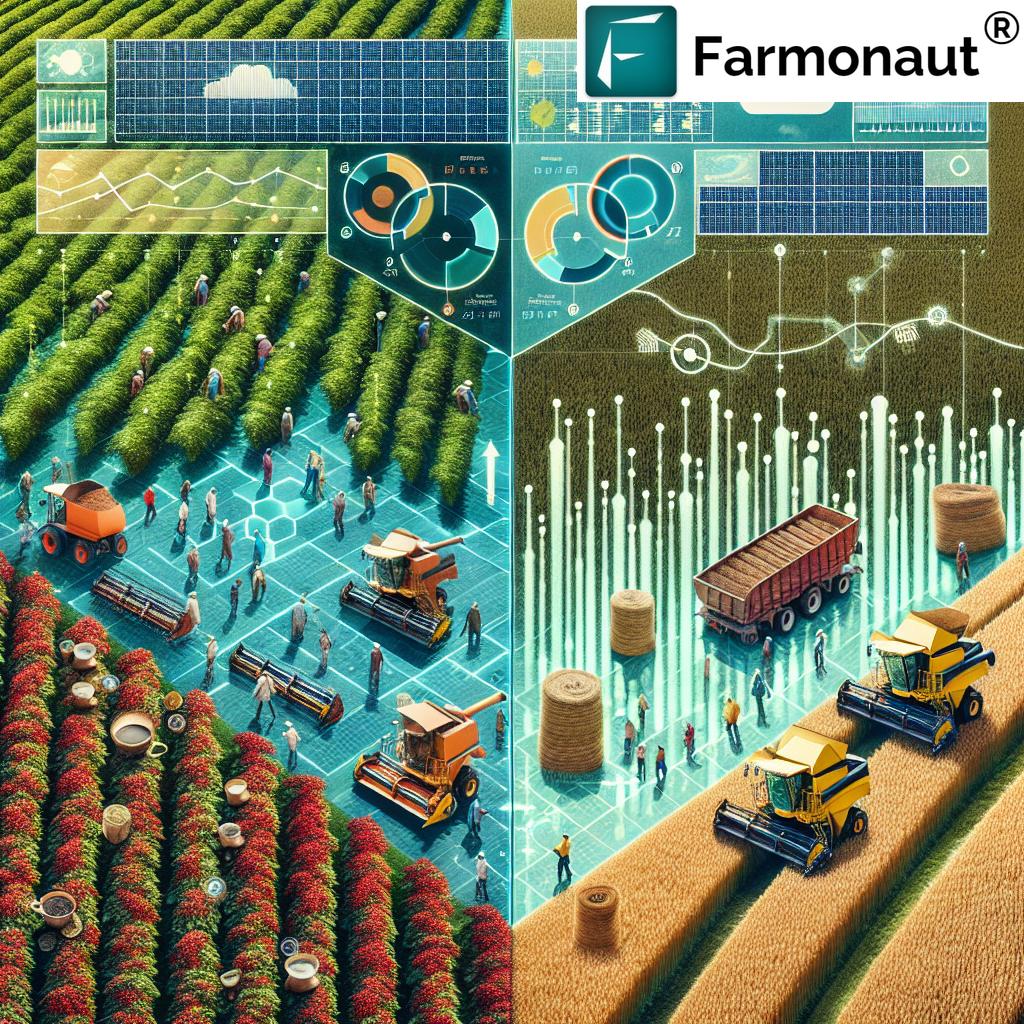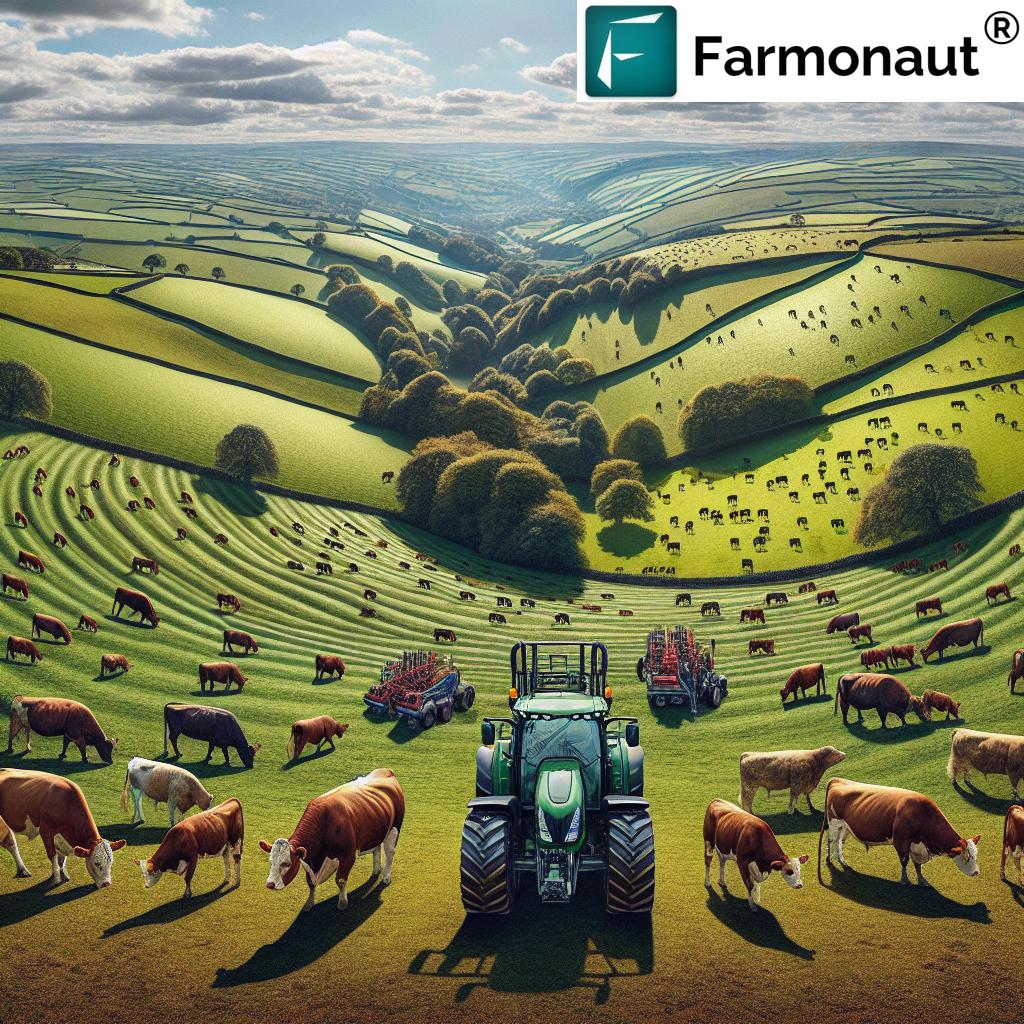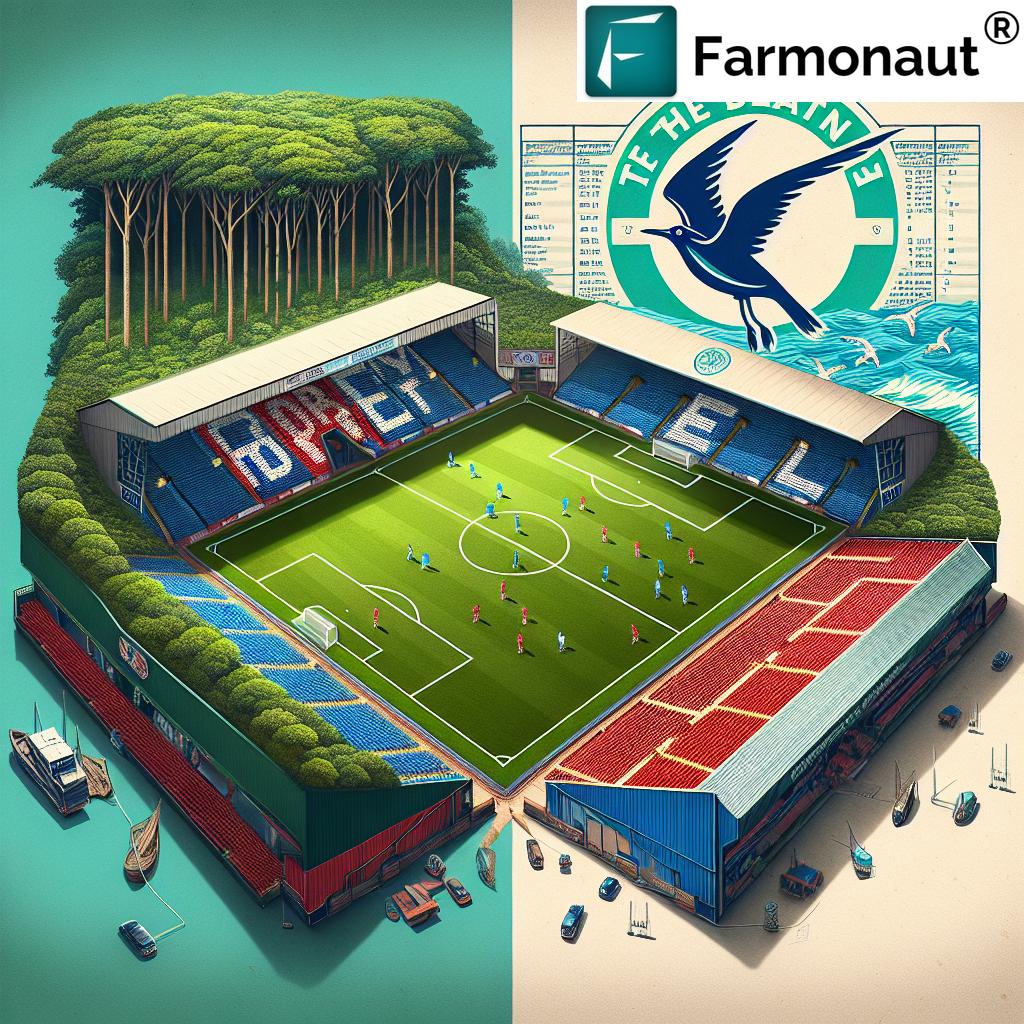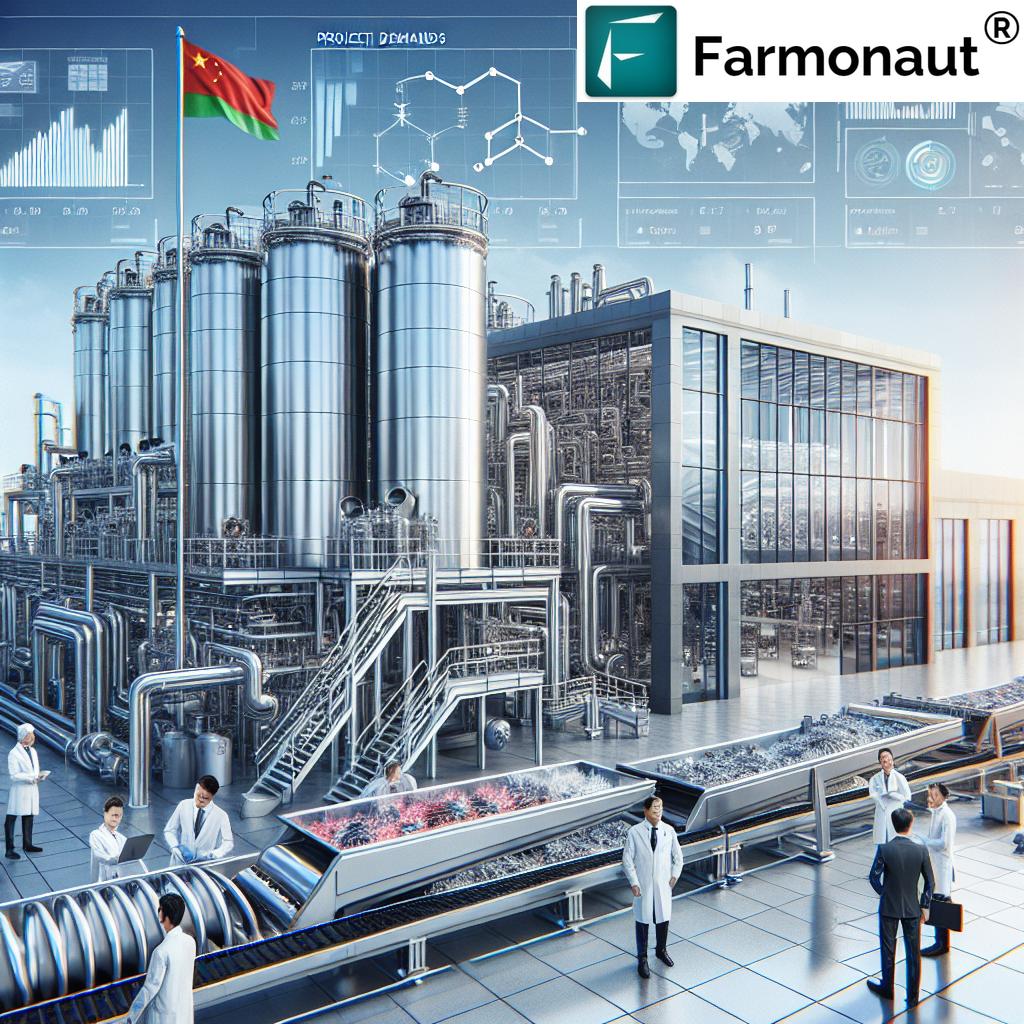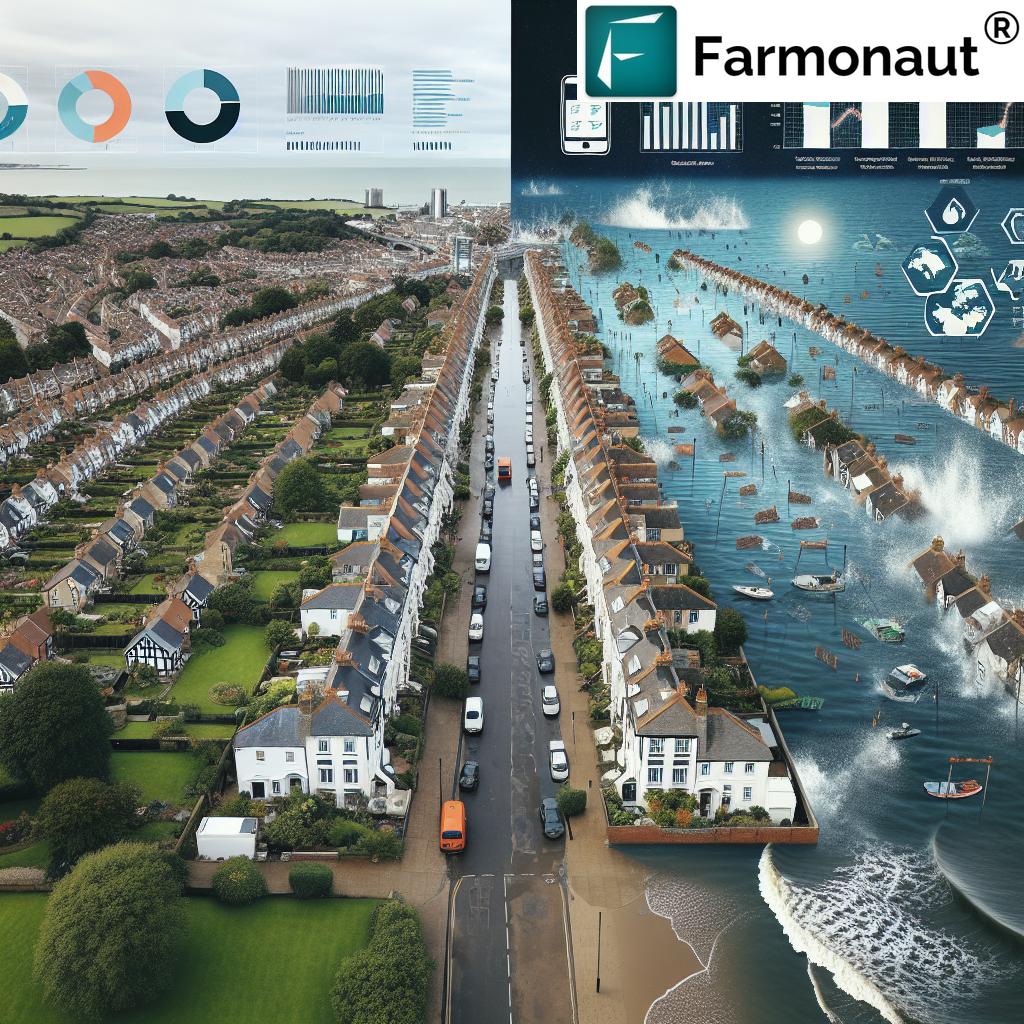Farming and Wildlife Advisory Group: 7 UK Secrets Revealed
“UK farms with sustainable practices see up to 30% higher biodiversity than conventional farms.”
Introduction: Unveiling the Symbiosis of Farming and Wildlife
In the heart of the United Kingdom, a movement has been quietly transforming fields and pastures for over half a century. This transformation isn’t just about increasing agricultural production—it’s about harmoniously integrating sustainable farming practices with wildlife conservation in agriculture. At the forefront of this movement stands the Farming and Wildlife Advisory Group (FWAG), a charity founded by pioneering farmers who recognized the vital relationship between productive agriculture and vibrant biodiversity on farms.
As modern agriculture faces growing pressures—balancing food security, climate change, and habitat preservation—FWAG’s commitment to environmental stewardship for farmers has never been more crucial. Through expert guidance, comprehensive advisory services, and collaborative initiatives, FWAG empowers farmers to create thriving ecosystems while boosting yields and securing business sustainability.
In this blog, we’ll reveal 7 UK secrets of the FWAG’s approach to sustainable farming, exploring practical methods and innovative solutions beneficial for both farmers and wildlife. We’ll journey through soil management, woodland creation, agri-environmental schemes, and the latest technological advancements like those offered by Farmonaut—a leader in satellite-based farm management.
Whether you’re a farmer, landowner, agri-business professional, or simply passionate about the countryside and the web of life it supports, join us as we uncover the best practices and strategies for sustainability, conservation, and profitability in UK agriculture.
The Farming and Wildlife Advisory Group (FWAG): Origins, Mission, and Impact
What is FWAG? The Farming and Wildlife Advisory Group, established in the 1960s, was started by a coalition of UK farmers who saw the need for practical, science-based advice on integrating environmental health with day-to-day agricultural operations. Since then, FWAG has grown into one of the UK’s most respected independent farm advisory services, providing trusted counsel on conservation, sustainability, and agri-environment compliance.
Our Mission and Objectives: Stewarding Farmland for a Prosperous Future
- Promoting Sustainable Farming Practices: Helping farmers balance productive agriculture with responsible care for soils, watercourses, and wildlife habitats.
- Enhancing Biodiversity on Farms: Supporting the development of more diverse, resilient agricultural landscapes that contribute to broader ecosystem health.
- Guiding Farmers Through Agri-Environmental Schemes and Grants: Ensuring farmers get the support they need to implement beneficial environmental programmes while fulfilling regulatory requirements.
- Fostering Community and Knowledge Sharing: Building networks among farmers, landowners, ecologists, and rural communities for ongoing improvement and innovation.
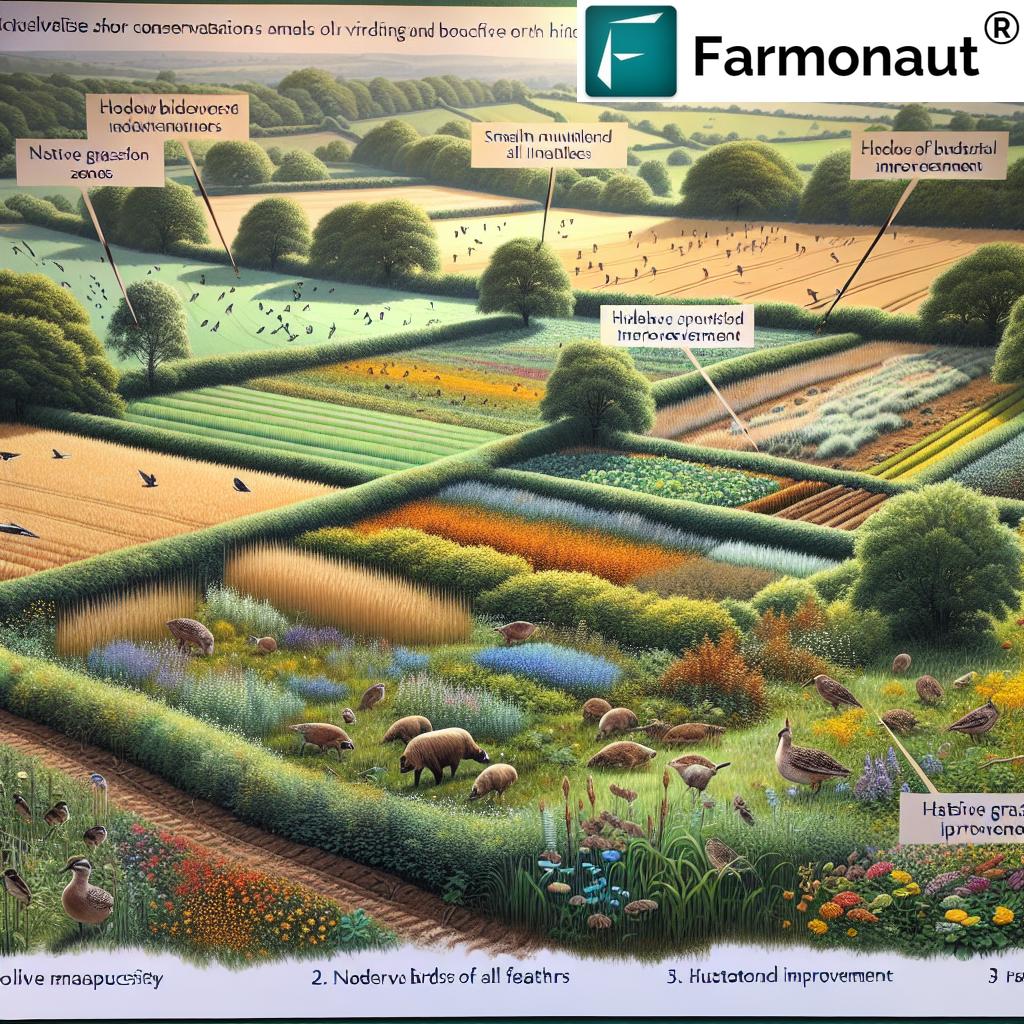
By linking environmental priorities with local farm business needs, FWAG ensures that every plan, scheme, or enhancement supports both farm productivity and nature’s resilience.
Secret #1: Sustainable Farming Practices – A Path to Wildlife Conservation in Agriculture
What Makes a Farm Truly Sustainable?
When we discuss sustainable farming practices, we’re talking about more than just reducing pesticide usage or rotating crops. Sustainability in agriculture is holistic: it encompasses soil and nutrient management, woodland creation and management, water conservation, and supporting networks of natural habitats throughout the landscape. With its comprehensive approach, FWAG is a true pioneer in helping landowners adopt methods that are nature-friendly and future-proof.
- Agri-Environmental Advice: FWAG’s advisors assist farmers in developing applications for agri-environmental schemes and grants. By evaluating farm land and integrating local environmental priorities, they help select cost-effective, high-impact options.
- Soil and Nutrient Management: Healthy soil is the foundation of profitable, resilient agriculture. FWAG guides farmers in nutrient planning, organic matter enhancement, and maintaining fertility for crop production and biodiversity.
- Woodland and Grassland Creation: Establishment and responsible maintenance of woodlands and grasslands introduce invaluable habitat diversity. This not only supports native birds, insects, and mammals but also provides additional income streams like timber production.
Example: A farm integrating rotational grazing, wildflower margins, woodland buffers, and precision nutrient management consistently yields higher productivity and biodiversity. Evidence shows that wildlife populations—pollinators, birds, and beneficial soil animals—thrive in these regenerative systems, creating crop resilience and improved farm profitability.
Discover how advanced satellite technology can monitor land use and environmental indicators, supporting sustainable decisions in UK farms.
Secret #2: Soil and Nutrient Management for Maximum Productivity and Biodiversity
“Soil management improvements can increase crop yields by 15% while reducing chemical use in UK agriculture.”
UK farms operate on some of the most diverse soils in Europe—from thick clays to sandy loams and peatlands. The key to resilient systems and agricultural productivity lies in recognizing the soil’s natural strengths and weaknesses.
- Soil Checks and Assessments: Regular assessments help farmers identify areas needing improvement, ensuring compliance with environmental regulations while boosting crop growth and pest resistance.
- Improved Nutrient Planning: Through advanced soil and nutrient management plans, fertilizer use is optimized, reducing costs and environmental runoff.
- Enhanced Water Retention: Healthy soils improve water retention and infiltration—critical for UK farms facing increasingly erratic rainfall.
Farmonaut Crop Monitoring and AI-Based Advisory
Farmonaut’s Satellite Crop Health Monitoring leverages advanced satellite imagery and artificial intelligence to give farmers daily insights into soil moisture, crop health, and vegetation (NDVI). This real-time data allows users to spot nutrient deficiencies, soil compaction, or irrigation issues instantly, enabling rapid, data-driven action for sustainable farming practices.
- Benefit: Reduces unnecessary chemical inputs, protects beneficial organisms, and improves overall productivity.
Discover Farmonaut’s AI Crop Advisory System
For even more actionable insights, Farmonaut’s Jeevn AI Advisory System provides personalized recommendations on fertilizer, irrigation, and crop protection. This empowers UK farmers to move towards precision agriculture without the high cost of hardware.
Learn how increasing soil organic carbon can make your farm both more productive and more environmentally friendly.

Secret #3: Woodland Creation and Management – Rewilding the Farm Landscape
Why Woodlands Matter in Modern UK Agriculture
While much of the UK farmland has been cleared over centuries for crops and pasture, woodland creation and management returns vital wildlife corridors, improves microclimates, and adds to the ecological value of the countryside. FWAG and similar organizations help advise on the establishment, maintenance, and management of woodlands, ensuring both environmental and business gains.
- Biodiversity: Woodlands are the backbone of habitat improvement programs, supporting songbirds, small mammals, pollinators like bees and butterflies, and beneficial predatory insects.
- Business: Managed woods can offer income streams via sustainable timber production, woodfuel, and agri-tourism, and provide windbreaks and shade for livestock.
Tips for Woodland Planning
- Select native species: Maximize biodiversity and ensure woodland resilience.
- Plan for varied structure: Include open glades, dense undergrowth, and mature canopies for diverse wildlife.
- Integrate with hedgerows: Connect woodlands with hedges and margins for wildlife corridors.
- Maintenance is key: Regular checks ensure trees thrive and fulfill their environmental role.
Secret #4: Regenerative Agriculture Methods – Restoring Ecosystems, Enhancing Resilience
What is Regenerative Agriculture?
Regenerative agriculture goes beyond sustainability by actively restoring soil health, increasing biodiversity, and improving water cycling. Core methods include:
- Cover Cropping and Green Manures: These protect soil, fix nitrogen, improve fertility, and provide for birds and insects during lean periods.
- Reduced Tillage: Minimizing soil disturbance increases organic matter and boosts soil fauna such as earthworms.
- Integrating Livestock: Managed grazing cycles stimulate plant diversity and help sequester carbon.
By following FWAG and leading agritechs’ advice, farms not only improve yields—often by 10-15% through better soil and pest management—but also restore ecosystems across their land, making them resilient to climate shocks.
See how remote sensing and AI can help you monitor regenerative efforts—boosting yield, biodiversity, and sustainability.
Comparison Table of Sustainable Farming Practices and Wildlife Benefits
| Practice | Soil Health Improvement (%) | Biodiversity Increase (%) | Estimated Yield Change (%) | Wildlife Supported |
|---|---|---|---|---|
| Crop Rotation | +18% | +25% | +7% | Soil fauna, pollinators, pest predators |
| Cover Cropping | +22% | +16% | +5% | Bees, butterflies, earthworms |
| Hedgerow Planting | +10% | +33% | +2% | Birds, insects, small mammals |
| Integrated Pest Management | +11% | +21% | +6% | Pest predators, birds, soil fauna |
| Reduced Tillage | +28% | +18% | +8% | Soil microfauna, ground beetles |
| Organic Fertilization | +19% | +20% | +4% | Microorganisms, worms, butterflies |
Compare methods: Sustainable farming practices directly benefit both yields and a wide range of British wildlife, proving that high productivity and conservation can go hand in hand.
Secret #5: Habitat Improvement Programs – Creating Havens for Biodiversity on Farms
How Habitat Programs Supercharge Biodiversity on UK Farms
- Hedgerow Restoration: Key in the Facilitation Fund Projects, these green boundaries shelter birds, pollinators, and small mammals while acting as carbon sinks.
- Wildflower Margins: Boost pollinator numbers, provide food for insects and breeding grounds for birds.
- Ponds and Wetlands: Attract amphibians, dragonflies, and increase landscape diversity.
- Grassland Management: Maintaining species-rich swards supports rare butterflies, bees, and grazing livestock health.
These habitat improvement programs fit seamlessly with sustainable farming practices, offering win-win benefits: a more beautiful landscape, increased ecosystem services, and a healthier, more resilient agricultural system.
Discover how to monitor all habitat zones across large farm estates with Farmonaut’s Agro Admin App.
Secret #6: Farm Advisory Services UK – Personalized, Independent Environmental Guidance
Why Expert Advice is Crucial
The UK’s policy landscape is constantly evolving, and the transition to sustainable farming requires expert support—both to maintain compliance with regulations and to maximize benefits from agri-environmental schemes and grants. FWAG’s farm advisory services UK make the difference by:
- Providing Independent, Trusted Advice: Guides farmers impartially and confidentially, ensuring every farm receives a bespoke, actionable plan.
- Assisting with Applications and Schemes: Supports understanding of and access to complex environmental schemes, making it easier to apply and comply.
- Conducting Environmental Health Checks: Comprehensive assessments help identify areas of improvement for both farm sustainability and wildlife preservation.
Access to advisory services isn’t just good practice—it’s good business, delivering long-term savings, increased productivity, and resilience to future challenges.
Explore fast, personalized advisory updates delivered directly to farmers for better crop and land management.
“Soil management improvements can increase crop yields by 15% while reducing chemical use in UK agriculture.”
Secret #7: Technology & Global Perspective – How Innovation is Shaping Sustainable Farming
UK to Global: A Shared Vision for Sustainable Agriculture
The principles fostered by FWAG are echoed worldwide by similar agricultural organizations like the Wild Farm Alliance in the US. These groups promote biodiversity on farms, advocate for native species corridors, and support integrating conservation into farming operations at every scale.
Technology, particularly satellite and AI solutions, is making these goals more reachable. Monitoring biodiversity, tracking habitat improvements, estimating soil organic carbon, and optimizing resource use have never been easier or more affordable.
Discover Farmonaut’s satellite-driven tools:
-
Carbon Footprinting
:
Track your farm’s carbon emissions in real-time and identify opportunities to reduce environmental impact and access green finance. -
Fleet Management Tools
:
Manage machinery, optimize logistics, and lower operational costs with easy-to-use digital dashboards. -
Blockchain Agriculture Traceability
:
Ensure secure, transparent supply chains from farm to fork to boost consumer trust and compliance in food and textile industries. -
Satellite-Based Crop Loan and Insurance Verification
:
Reduce application fraud and deliver timely financing to UK farmers through precise remote sensing.
API users and developers can seamlessly integrate Farmonaut’s features. See our API:
Farmonaut Satellite & Weather API |
API Developer Docs
Farmonaut: Empowering Sustainable Agriculture with Advanced Technology
How Farmonaut Is Revolutionizing Farm Management
Farmonaut is an agricultural technology company dedicated to making precision agriculture accessible and impactful for UK farmers and globally. Our robust, affordable platform leverages:
- Satellite imagery and AI to monitor crop health, soil conditions, and water management across holdings of any size.
- Real-time data delivery via web, Android/iOS apps, and secure APIs—empowering rapid, evidence-based decision-making.
- Blockchain solutions for traceability—bolstering consumer confidence in agricultural produce by verifying each stage from farm to shelf.
- Carbon footprinting and sustainability analytics to track, improve, and demonstrate credible environmental stewardship for farmers.
Farmonaut does not sell equipment or act as a marketplace; our sole focus is delivering actionable intelligence, resource tracking, and advisory insights to support the modern, responsible farmer.
Explore Farmonaut’s solutions and experience the next level of farm management today.
FWAG & Farmonaut: Complementary Pillars of Modern, Responsible Farming
Why use both? FWAG provides the boots-on-the-ground expertise, local knowledge, and relationship-building essential for embedding optimal conservation activities in farming systems. Farmonaut offers precise, timely intelligence and resource management through technology. Together, they offer a pathway for UK farms to:
- Achieve higher biodiversity and productivity, while ensuring regulatory compliance.
- Receive tailored advice based on local conditions and farm objectives.
- Access real-time data and continuous improvement opportunities through digital platforms.
Integrating these services leads to measurable benefits—reduced input costs, improved natural capital, and legacy farmland ready for the next generation.
FAQs About FWAG, Sustainable Farming, and Farmonaut
What types of farms can benefit from FWAG’s services?
All farm types—from arable and dairy, to mixed and livestock—can benefit from sustainable farming practices, with tailored advice for each. FWAG supports enterprises of every size across the UK.
Do sustainable farming practices really increase productivity?
Yes. Implementing sustainable and regenerative agriculture methods improves soil, increases biodiversity, and often results in higher, more stable yields. UK evidence indicates crop yields rise by 10–15% through better soil management and integrated biodiversity.
How does Farmonaut support UK growers?
Farmonaut delivers satellite-based crop monitoring, AI-driven advice, and blockchain-enabled traceability directly to farmers through web and mobile apps. This gives users insight into nutrient requirements, water management, and compliance—empowering better decisions and transparency.
Which agri-environmental schemes and grants are most popular?
ELMS (Environmental Land Management Schemes), Countryside Stewardship, and Woodland Creation grants are top choices among UK farmers. FWAG guides you in eligibility, planning, application, and delivery for these schemes.
Can digital solutions replace traditional advisory services?
We believe the best outcomes come from combining the two: expert local advisers provide context and strategy, while digital tools offer real-time monitoring and automated alerts—ensuring fast, efficient progress.
How do these practices help wildlife?
Habitat features like hedgerows, wildflower margins, ponds, and native woodlands support birds, pollinators, amphibians, and beneficial soil fauna, making farmland a refuge for wildlife while enhancing yields.
Conclusion: The Future of Sustainable Farming Practices and Wildlife Conservation in the UK
The UK’s agricultural future is being shaped by the dual imperatives of food production and wildlife preservation. FWAG, with its rich heritage of independent, practical advisory services, is a beacon for what can be achieved when farmers put environmental stewardship at the heart of their operations. Today’s digital transformation, enabled by innovators like Farmonaut, brings a new level of precision and insight—making sustainable farming more achievable, affordable, and profitable for everyone.
Whether your goal is higher yields, regulatory compliance, or a thriving natural environment for future generations, sustainable farming practices hold the key.
Explore your next steps with FWAG and experience how technology via Farmonaut can unlock your farm’s true potential. Together, we can ensure that British agriculture leads in both productivity and environmental excellence.






